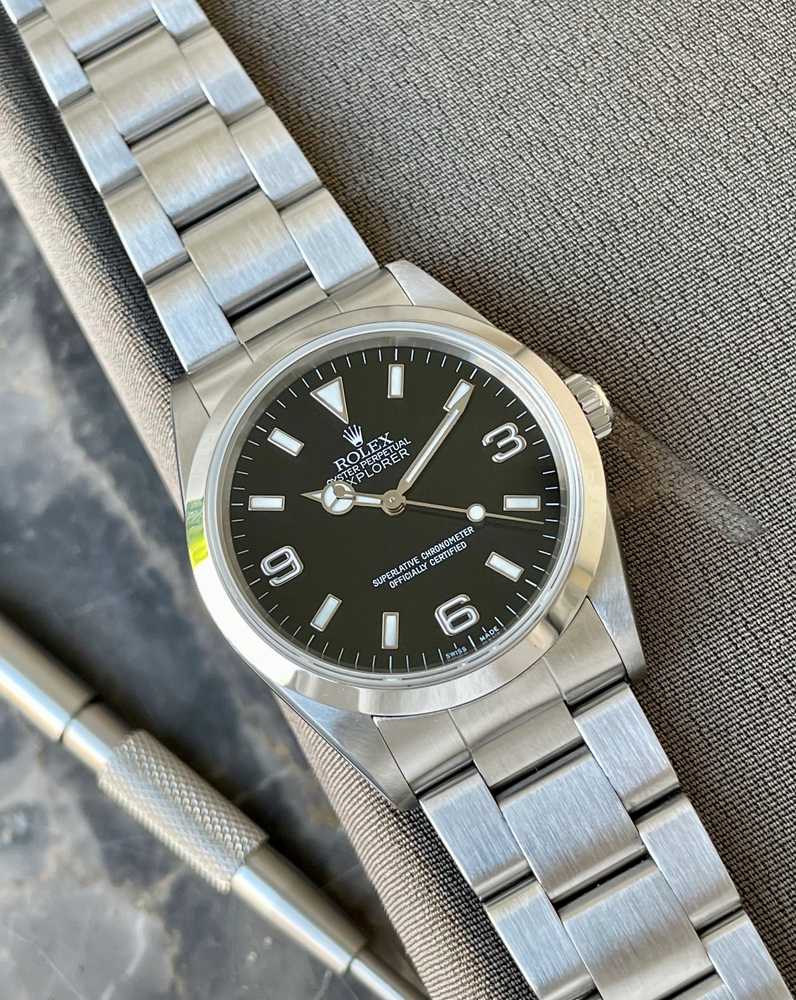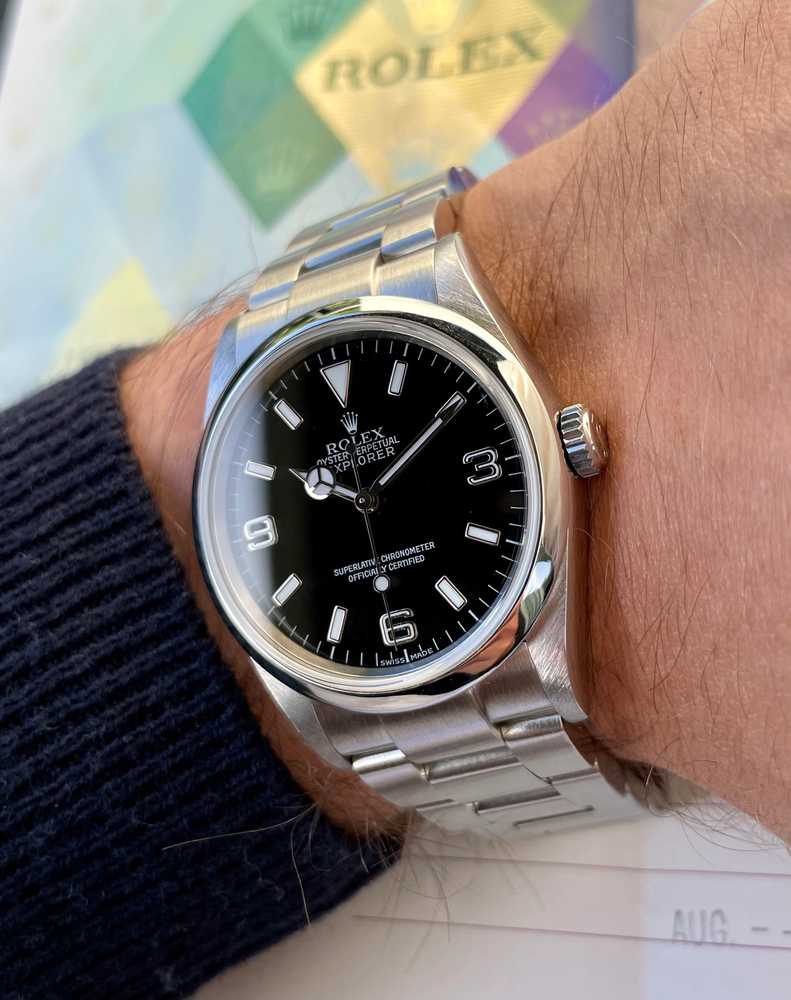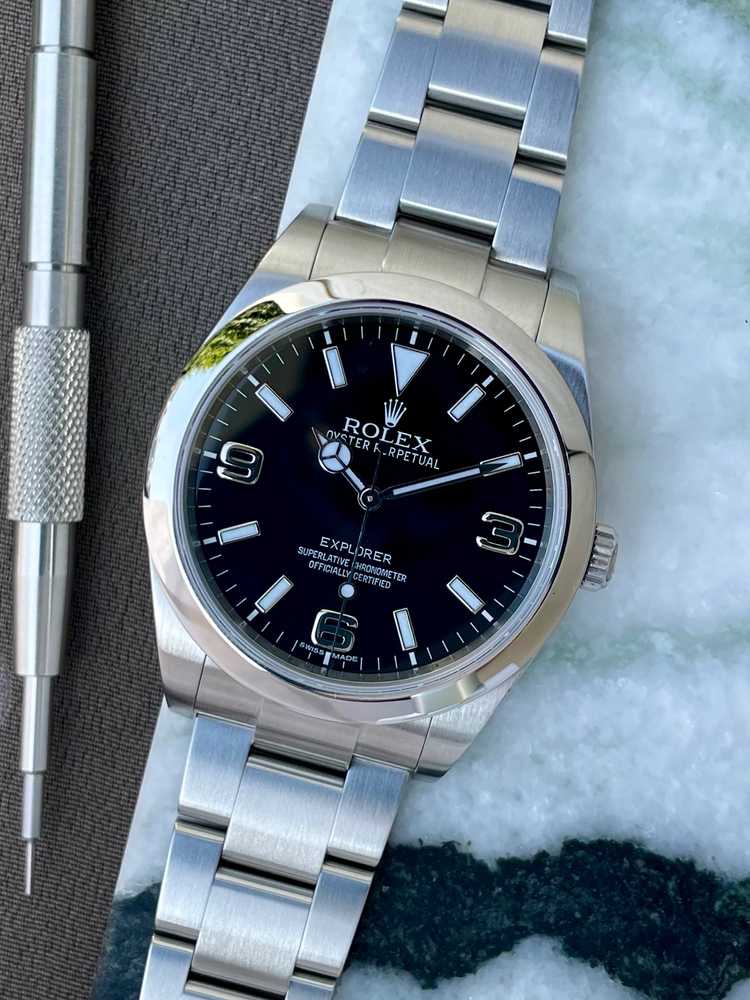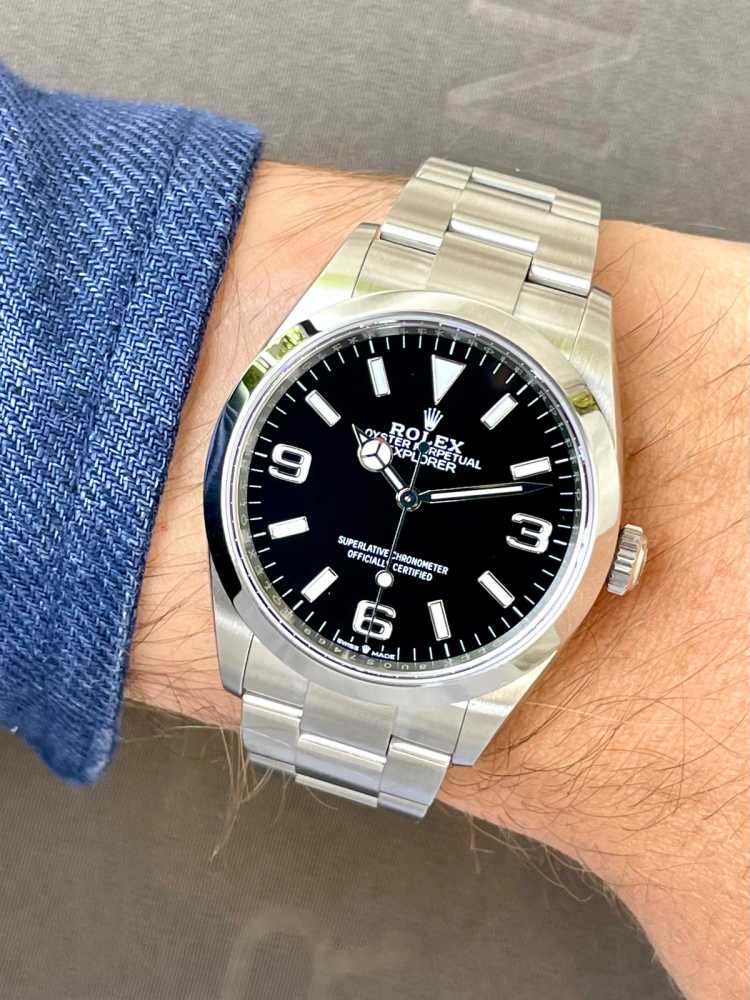
A Rolex will never change the world. We leave that to the people who wear them.
Explorer 1: 5 and 6 digit references
A look into the Explorer model by Rolex, focussing on the 5 and 6 digit references made from 1989 until now.
Rolex Explorer 1
The Explorer model was first introduced by Rolex in 1952 with the reference 6150. The first model already had the typical 3 - 6 - 9 on the dial, that makes the Explorer unique to other models. This style of dial actually is so embedded to this model that on other watches with a similar dial lay-out people refer to it as a "Explorer-Dial".
In this blog we focus on a more neo-vintage and modern versions of the Explorer: reference 14270, 114270, 214270 and 124270.

Reference 14270
Introduced in 1989 the reference 14270, the first 5-digit reference Explorer 1, is the first version where the design went the way of the current model. The 3 - 6 - 9 on the dial became applied metal numbers (no longer printed tritium) and it is the first model with sapphire glass instead of plexiglass. Reference 14270 has different dial variations: tritium (swiss t-<25), luminova (swiss only) as well as super-luminova (swiss made). The caliber was updated to caliber 3000, which was seen in other no-date Rolex models as well. One thing that remained the same is the size, Rolex kept it at 36mm. A very comfortable size that is perfect for exploring.

Reference 114270
Following reference 14270 Rolex introduced the 114270 in 2001. Still featuring the 36mm case, changes are only very minor. What are the main differences? The 114270 features solid endlinks instead of the hollow model and the caliber 3000 was upgraded to the newer 3130 caliber.

Rolex 214270
In 2010 Rolex went big: the introduction of reference 214270 where the case size of the Explorer 1 increased from 36 to 39mm. This model furthermore featured the updated 3132 movement (instead of 3130) and white gold applied 3 - 6 - 9 numeral without super-luminova (on the first models from 2010 until 2016, the second generation did have super-luminova).

Reference 124270
In 2021 Rolex made another update to the Explorer 1 model. The largest change was again in case-size. This time however it wasn't an increase but a decrease, back to the original 36mm from the 39mm. A change that was welcomed by the original Rolex Explorer lovers. Furthermore there was another movement upgrade to caliber 3230, with increased power reserve. Rolex also made another bold decision (similar to that decision in 2010) with the introduction of a two-tone (bicolor) Explorer. Precious metal in a sports-/tool-watch, why not?
